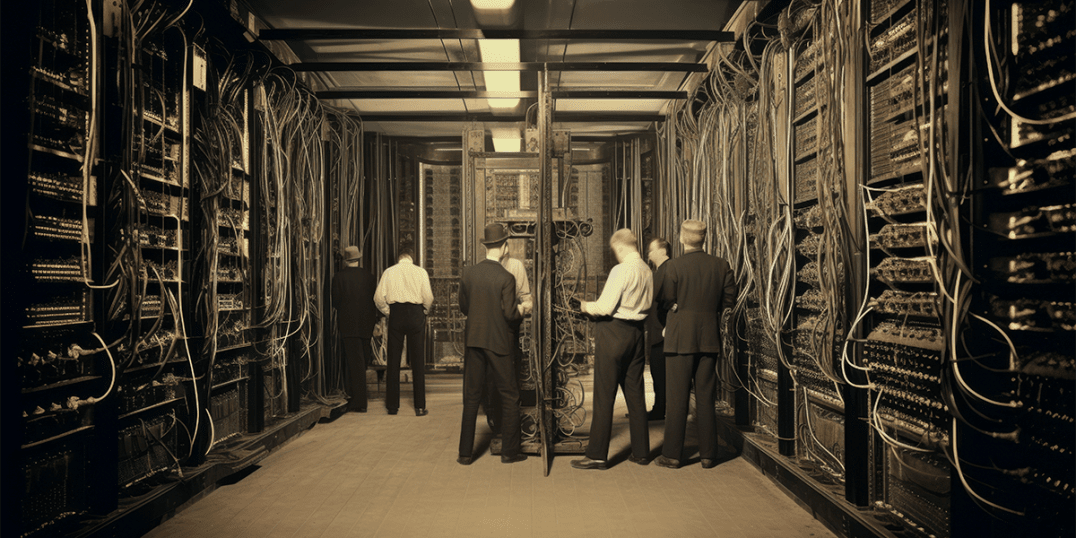Rack cabinets in Server Rooms: Evolution and server development in the IT industry
19" rack cabinet - historical overview
For more than seven decades, data communication cabinets, commonly known as rack cabinets, have been an integral part of IT infrastructure. The history of these vital technological components dates back to the 1950s, when the first server rooms were born. These early data centers, located in enterprises and government institutions, were equipped with bulky and massive ICT equipment, requiring special installation and environmental conditions.
The pioneers in server development were companies such as IBM, DEC (Digital Equipment Corporation) and HP (Hewlett-Packard). Their products dominated the industrial and commercial server market, gaining worldwide recognition. The 1960s brought with them the development of personal servers, created by giants such as Xerox and DEC. These smaller, more affordable devices opened the way to home use. Today's server market is characterized by a variety of manufacturers, offering a wide range of prices and functionalities.
Rapid development of computer networks in the late 20th century
Over time, to ensure optimal conditions for servers, companies and institutions began to create specially dedicated rooms - server rooms. In these specialized spaces, servers and other ICT devices were mounted on special shelves or in racks. This solution not only made it easier to manage and maintain devices, but also optimized the use of available space.
Over the years, as ICT devices became more miniaturized, rack cabinets gained in popularity. The 1990s brought the standardization of rack dimensions, making it even easier to install and maintain equipment. Nowadays, rack cabinets are a key component of any server room, finding use in enterprises, government institutions and private homes alike.
Nomenclature and use in information systems
The name "RACK" is derived from the English word for rack, which in turn has roots in French, where it means ladder. The term perfectly reflects the rack structure of mounting equipment in racks.
Normally, servers, computers, routers, switches, alarm systems and other ICT devices are usually mounted in racks. This allows efficient management and cooling of these devices. The racks also contain special modules, such as network cards, hard disk controllers and power supply modules, allowing the racks to be individually customized. In addition, various accessories are installed, including ventilation panels, ventilation grilles or terminal strips, which promotes better space management and equipment maintenance.
It is worth noting that rack cabinets are designed for mounting special ICT equipment, not standard computers or printers. Inappropriate use of rack cabinets can lead to equipment damage or system malfunction.

Standing cabinets, hanging cabinets and cabinet accessories
The server market continues to grow, being one of the fastest-growing sectors in the world. Rack cabinets, despite the growing popularity of cloud computing and other modern solutions, still remain an indispensable part of IT infrastructure.
The development of server racks has accelerated significantly in recent years, mainly due to growing investments in artificial intelligence (AI). The increased demand for computing power and processing of large data sets, which are necessary for AI projects, has made server rooms a key component of the infrastructure supporting these advanced technologies. Modern data centers are now being designed to optimize the processes involved in machine learning and deep learning, which in turn implies the need for more advanced cooling and power management systems. This trend not only contributes to the development of more efficient and sustainable data centers, but also opens up new perspectives in AI innovation and research.
The Lanberg brand, responding to the dynamically changing needs of the market, offers a wide range of 19" rack cabinets and assortments for them. Its portfolio includes standard standing models and wall-mounted cabinets, as well as specially designed cabinets tailored to the individual requirements of each server room. In addition, Lanberg offers rack cabinets equipped with a variety of modules and accessories for the cabinets, such as power strips, fans, patch panels, organizers or all kinds of cables, allowing customers to configure the ideal solution for their needs.







